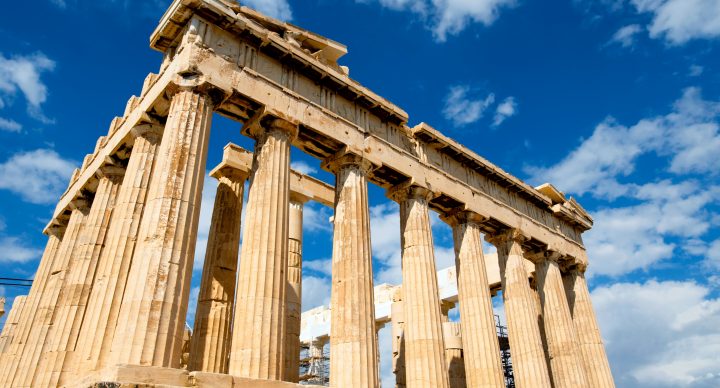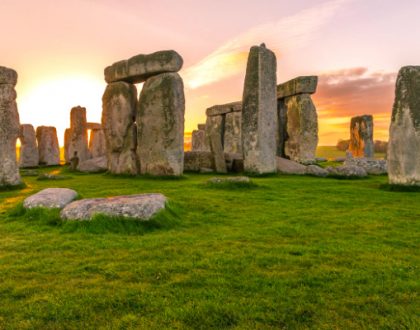Grade 6 Social Studies

Course Features
Course Duration: Full Year
Category: History/Social Studies, Middle School
Assessment: Pre-Test, Lesson Practice, Unit Exams, Mid-Term Exam, Final Exam
Language: English
Course Details
Course Overview
The Acellus Grade 6 Social Studies course focuses on World History and Geography from pre-civilization through the rise of the Roman Empire. It begins with Hominids and Homo Sapiens and their migration to the six continents, and continues with the Paleolithic and Neolithic ages. Students learn about the Middle East, Egypt, Judaism, Mythology, and Early Greece. They analyze the Greek City States, Persia, and war between Greece and Persia. Students study India's geography, cultural system, religions, and contributions. They explore East Asia, focusing on China's geography, isolation, warring states, religions, politics, and dynasties. Students investigate the rise of Rome, some of its legends and founding people, Julius Caesar, and Pax Romana. They examine the birth of Christianity, its impact on Rome, and its enduring impact throughout the world to this day. Students receive understanding of interactions among various cultures, emphasizing the lasting contributions of each and the link, despite time, between the contemporary and ancient worlds.
This course is taught by Acellus Instructor Susanne Mitko. Some schools utilize this curriculum at the 6th grade level.
Sample Lesson - Jewish People Under Roman Rule
 This course was developed by the International Academy of Science.
Learn More
This course was developed by the International Academy of Science.
Learn More
Scope and Sequence
Unit 1 - Basic Principles of Geography Students begin the course by becoming familiar with the basic principles of geography. They discuss the continents and oceans, latitude, longitude, and global addresses. They consider the hemispheres and climate zones of the earth. They explore maps, including their parts and their three types: physical, political, and thematic. They study the five themes of geography: location, place, human/environmental interaction, movement, and region. They investigate primary and secondary sources and examine the use of timelines. Unit 2 – Pre-Civilization In this unit students discuss archeology. They study emmigration from Africa and the transition into the New World. They explore the Paleolithic or Old Stone Age and the transition into the Neolithic Age. They also consider the effect of climate change on Neolithic living, and they are introduced to Oetzi, the iceman of the Alps. Unit 3 – Early Civilization - Middle East Next students investigate the characteristics of civilizations. They explore the political geography of the Middle East and focus on the geography of Mesopotamia. They study the benefits that can be derived from flooding. They examine government and polytheism in Ancient Mesopotamia. They consider the cuneiform style of writing. They learn about Hammurabi's Code of Law and the contributions of Mesopotamia to the world. Unit 4 – Egypt Egypt is the place students focus on next, beginning with its geography and followed by a look at it's religious practices, the Old Kingdom, and the pyramids. Students explore the Middle Kingdom, followed by the New Kingdom and Ahmose. They discuss Egyption art, Egypt's social pyramid, and hieroglyphics. They consider trade in the Eastern Mediterranean. They study the Egyptian rulers King Tut, Ramses II, Hatsheput, and Akthenaton. They examine the Kush civilization and analyze how it conquered Egypt. Unit 5 – Judaism In this unit students study the history of the Jewish people, beginning with Abraham and the Covenant, Judaism as a monotheistic religion, and the impact of Judaism on the world. They explore the Exodus, the Jewish kings, and the basic beliefs of Judaism. They discuss Judaism as it exists today. They probe the Roman Diaspora and how the Jewish people survived the persecution and discrimination toward them that followed it. Unit 6 – Introduction to Mythology and Early Greece Students explore myths and their purpose -- explaining the unexplainable. They study how myths are intertwined in history, how myths teach behaviors, and myths in today's world. They learn about the geography of Greece. They study the Phoenician people. They discuss the impact of the geography of Greece on its trade. They consider the Minoans, the Myceneans, and the Dark Ages in Pre-classical Greece. Students investigate the four types of government the ancient Greeks tried -- monarchy, oligarchy, tyranny, and democracy. They examine Athens. They compare direct democracy and a republic, they analyze Athenian democracy, and they compare the Athenian democracy with the democracy of today's United States. This unit is followed by the Mid-Term Review and Exam. Unit 7 – Greek City States and Warfare, the Persian Empire, and Greek Culture and Impact Students next explore Greek city-states and warfare, beginning with Sparta -- the city of soldiers, slaves, and women. They compare the two greatest city states, Athens and Sparta. They study the Persian War, specifically the causes of the war and the battles of Marathon, Thermopylae, and Salamis, as well as the defeat of Persia at the battle of Plataea. Focusing on the Persian Empire, students investigate what it takes to build an empire. They consider Cyrus the Great and the accomplishments of the Persian Empire, as well as the Golden Age of Athens. They examine the Peloponnesian war and how fighting among the city states weakened Greece. They discuss the accomplishments of Alexander the Great, along with the Hellenistic age, the contributions of Ancient Greece, and the first historians. They contemplate the lives of individual Greeks who made important contributions to the world. Unit 8 – India and Hinduism Turning to the subcontinent of India, students examine its geography, as well as how Monsoons impact it. They focus on civilization in the Indus River Valley, the invasion of the Aryans and how they influenced Brahmanism, and on Dharma and Bhagavad Gita. They explore Hinduism, with its belief in Brahman and multiple gods. They study the concepts of Dharma and the caste system. They investigate the concepts of Karma, Samsara, and Moksha. Students consider the Untouchables and civil rights. They discuss Hinduism today. They contemplate the life of Siddhartha Gautama, the Four Noble Truths, the Eightfold Path, the spread of Buddhism, and Buddhism today. Students analyze the empire of the Maurya, and Asoka’s rule. Unit 9 – East Asia Students begin this unit inspecting a political map of East Asia. They examine Chinese isolation, the civilization of the Huang He, and an overview of four dynasties. They consider the Shang Dynasty, ancestor worship, the Mandate of Heaven, and the Zhou Dynasty. They learn about the terra cotta warriors. They contemplate Confucianism, Daoism, and Legalism. They study the Qin Dynasty and the Great Wall of China. They discuss the Han Dynasty and its exams. They review the Silk Road and how Buddhism spread from India to become more widely accepted in China than in anywhere else. Unit 10 – The Rise of Rome In this unit students investigate Rome. They take a look at its geography, the people who impacted the early Romans, and citizens of Rome who were influential in its beginnings. They study Cincinnatus. They explore Rome's early tripartite system of government, its minority rights, and the rule of law. They investigate the Punic Wars, the weakening of the Republic, and the rise and fall of Julius Caesar. They discuss Augustus Caesar, Rome's first emperor. Unit 11 – Pax Romana & Christianity Students continue to focus on Rome, learning about Pax Romana and its roads, standardization, and communication. They learn about Roman architecture and the achievements of Ancient Rome. They study the Jewish people. They examine the life of Jesus, his parables, his teachings, and his death. They explore the persecution of early Christians and the later legalization of Christianity. This unit is followed by the Final Review and Exam.
This course does not have any sections.
More Courses by this Instructor
43738




